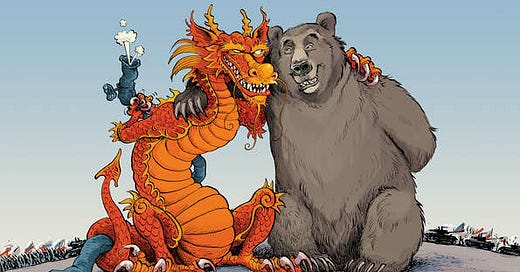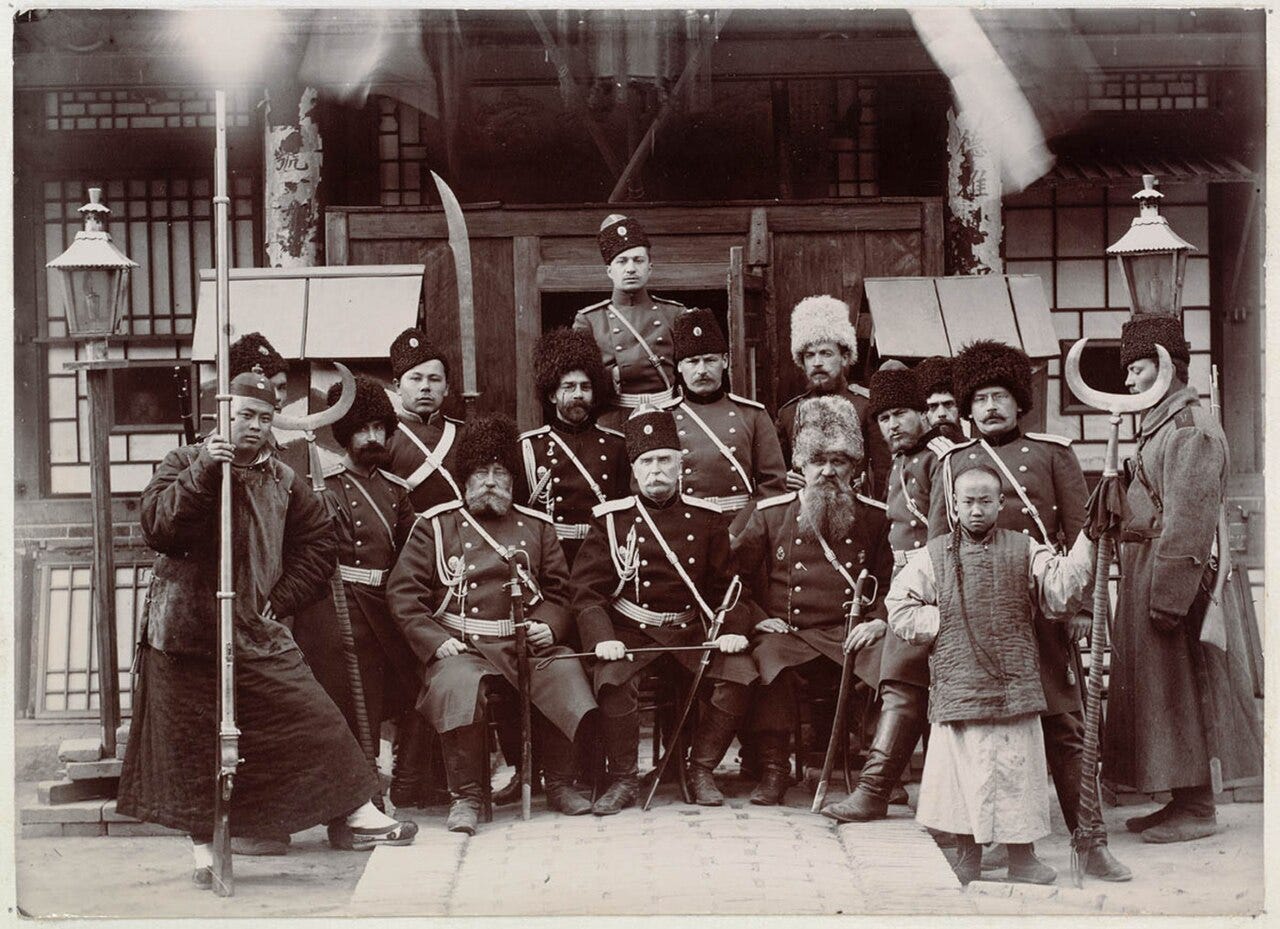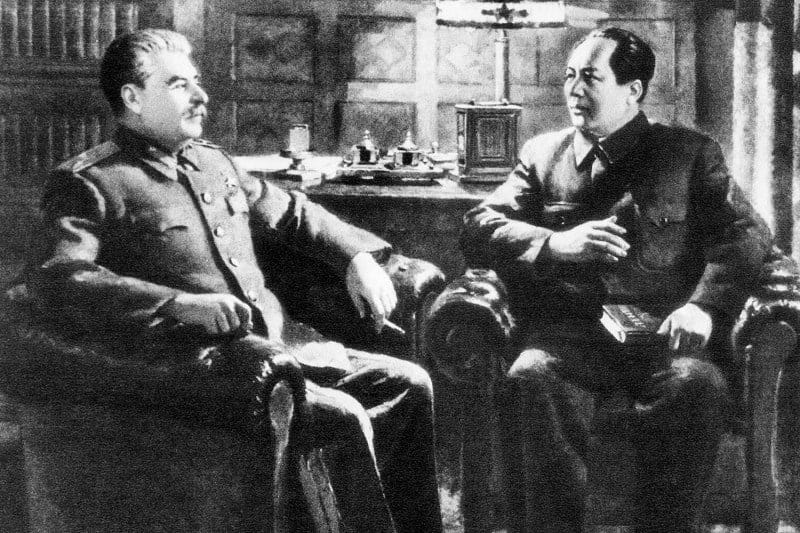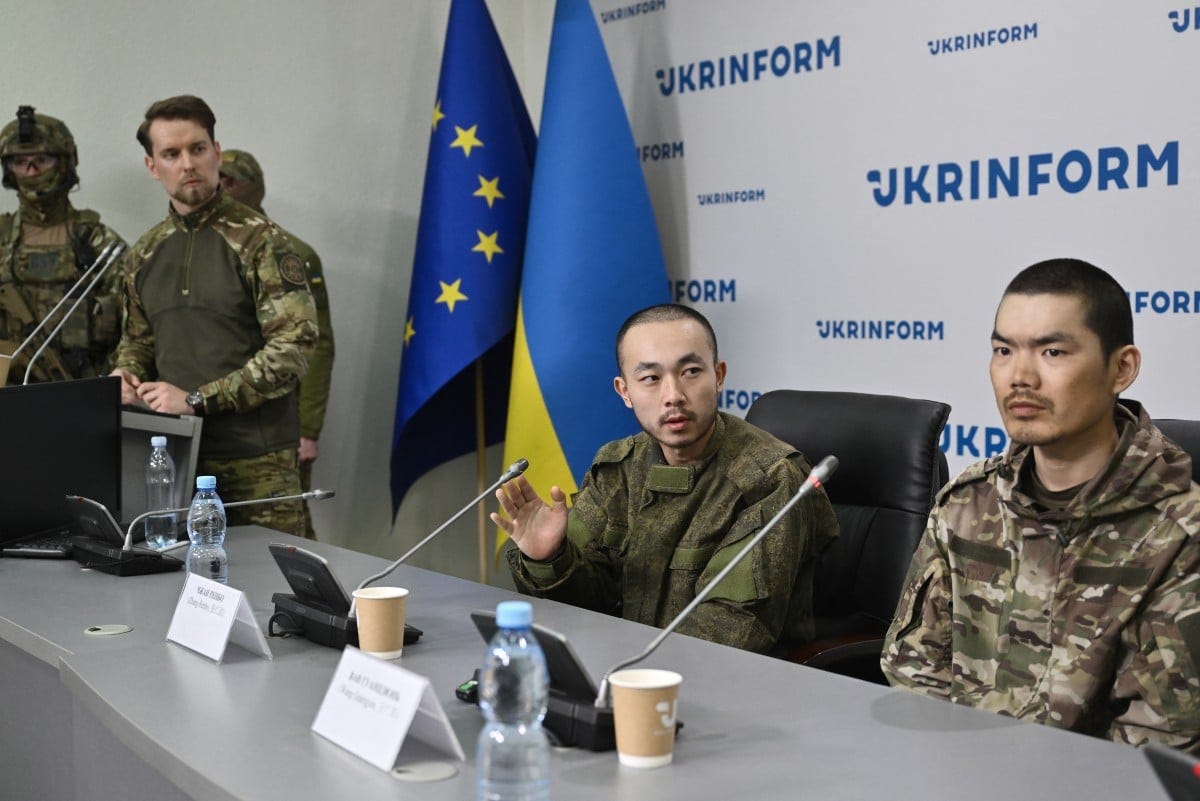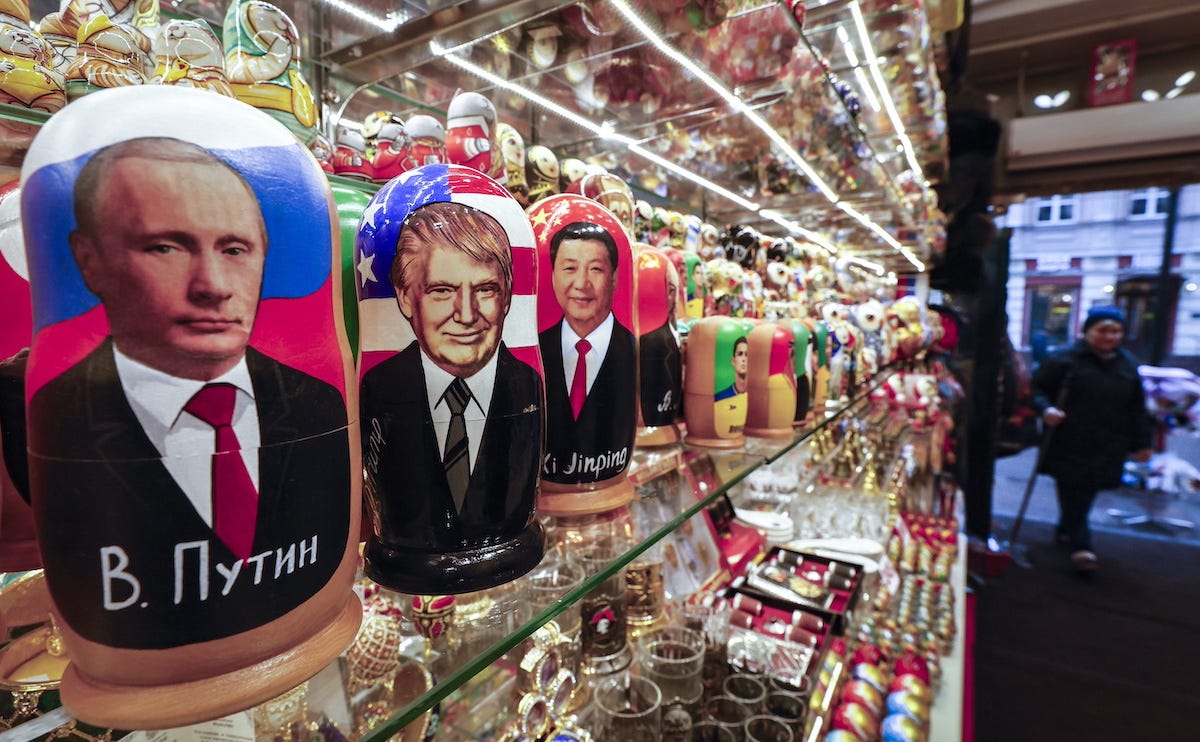Fragile Foundations: The Complex Reality of Sino–Russian Relations
Historical grievances and the illusion of unity in Beijing and Moscow’s uneasy alliance.
Over the past decade, Beijing and Moscow have cast themselves as inseparable partners on the world stage. Despite these mutual proclamations of an “intimate alliance,” the empirical reality of Sino–Russian relations is considerably more complex than official discourse implies. In the wake of Russia’s invasion of Ukraine, major media outlets such as the Financial Times and the Wall Street Journal noted that China’s ongoing oil purchases and diplomatic neutrality made it “a decisive enabler of Russia’s war against Ukraine,” underscoring Beijing’s material support for Moscow under Western sanctions. In June 2025, however, the New York Times reported that Russian counterintelligence was mining data from the Chinese messaging app WeChat to identify suspected Chinese agents—and that the FSB had branded all Chinese nationals “enemies” posing a grave security threat. Even more alarming, in February 2024 the Financial Times cited leaked classified documents showing that Russia had war-gamed tactical nuclear strikes to repel a hypothetical Chinese incursion into its Far Eastern regions—evidence of a disturbingly low threshold for escalation. These revelations reveal a deep current of mutual suspicion that belies the public façade of Sino-Russian solidarity, and which continues to reverberate through policy debates in Europe, the Indo-Pacific, and the Middle East.
A look back at the history of Sino-Russian relations does much to explain these undercurrents of mistrust. Official contact between the two empires dates back to the 1689 Treaty of Nerchinsk, which constituted the first formal agreement between Imperial China and Tsarist Russia, demarcating the empires’ mutual border along the Argun and Stanovoy Mountains and establishing a framework for peaceful trade and diplomatic relations. Yet by the mid-nineteenth century, Imperial Russia had already begun to brazenly violate this agreement. Under military duress, the Qing court was compelled to sign the Treaty of Argun in 1858—ceding some 600,000 square kilometers north of the Amur River—and then the Convention of Peking in 1860, which formalized the handover of an additional 400,000 square kilometers encompassing today’s Primorye region, including Vladivostok. Further protocols in 1864 stripped another 440,000 square kilometers from Qing China, cementing a permanent loss of roughly 1.6 million square kilometers to the Russian Empire.
Just as the century before had been marked by imperial rivalry, the final days of World War II saw a fresh wave of devastation. On August 9, 1945—two days after the atomic bombing of Nagasaki—Operation August Storm unleashed some 1.5 million Red Army troops into Japanese-occupied Manchuria. In the ensuing months, Soviet forces occupied Mukden (Shenyang), Harbin, Changchun, and Dalian, systematically dismantling factories, rail networks, and power plants, and loading heavy machinery onto Trans-Siberian trains bound for the Soviet Far East. Contemporary memoirs and local testimonies recount rivers running red with blood, mass rapes, and summary executions of both surrendered Japanese soldiers and Chinese civilians as discipline collapsed amid the scramble to extract reparations. The material toll is estimated at over $5 billion in 1945 U.S. dollars for machinery alone—equivalent to roughly $80 billion today when adjusted for inflation—with perhaps an additional $2 billion (1945 USD) levied as reparations against local populations. This occupation permanently damaged Northeast China’s economic foundation and left deep scars in the region’s collective memory.
In the uneasy optimism that followed, the People’s Republic of China and the Soviet Union forged a close partnership grounded in shared Marxist–Leninist ideology and mutual security concerns. Moscow provided Beijing with critical economic aid, weapons, and technical assistance—helping to rebuild Chinese heavy industry and laying the groundwork for China’s nascent nuclear program. This ideological camaraderie of the 1950s, however, gave way in the 1960s to the Sino–Soviet split and deadly border clashes, most famously the March 1969 battle over Zhenbao (Damansky) Island. Soviet hardliners, including Defense Minister Marshal Grechko, advocated “a one-strike solution” against China, preparing intermediate-range ballistic missiles armed with multi-megaton warheads for surgical nuclear strikes on key Chinese targets. Moscow even explored the possibility of a joint U.S.–Soviet strike to preempt China’s nascent nuclear forces. Only U.S. diplomatic intervention and China’s own deterrent buildup defused the crisis, but the memory of near-nuclear confrontation persists in both capitals.
With the Soviet collapse in 1991, Beijing and Moscow reset their relationship as partners against Western unipolarity. Annual trade has soared from virtually nothing to over $200 billion, with China importing roughly half of Russia’s energy exports and exporting some $30 billion more in manufactured goods. Still, beneath these headline figures lurk strategic imbalances: Russia remains disproportionately dependent on China’s market, while Beijing rebuffs Moscow’s appeals for advanced weaponry—fighter jets, precision missiles, semiconductors—fearing that overt support would invite secondary sanctions and imperil its ties to Europe and North America. When President Putin visited Beijing in 2024 seeking a multibillion-dollar loan, China offered credit lines only through third-party banks with stringent collateral requirements, underscoring Moscow’s subordinate economic position.
The entrenched skepticism that has long existed between Moscow and Beijing extends to their respective domestic populations. Inside China, the CCP meticulously manages public discourse about Russia, with state media parroting and amplifying Kremlin talking points. Despite this, some expressions of popular sentiment are able to slip through the cracks: online slurs like “máozi” (a derogatory slang for Russians) proliferate, reflecting deep-seated mistrust rooted in historical grievances and modern discrimination. As one Weibo user noted, “Russia seized 1.6 million square kilometers of our land and still hasn’t returned it; the United States has never occupied an inch of our territory.” Another posted, “Whenever I hear Russians boast about ‘brotherly friendship,’ I can’t help but recall how Vladivostok and all of Outer Manchuria were carved from China—something Americans have never dared to do.” When Russian netizens celebrated the 130th anniversary of Vladivostok’s annexation on the Chinese social media platform Weibo—an event many saw as glorifying the 1860 seizure of Qing territory—Chinese users felt publicly humiliated and bombarded the Russian embassy’s comments section, only to be brusquely rebuffed, with the Russian embassy deleting comments en masse, blocking accounts, and labeling critical Chinese netizens “malicious provocateurs.” While it is far from unique for foreign embassies to engage directly with Chinese netizens via their official social-media accounts, what set the Russian embassy’s heavy-handed response apart was its unusually punitive tone—which laid bare the very mistrust such “all-weather” friends claim to transcend.
Online discussion of the treatment of Chinese volunteer fighters in Ukraine is similarly revealing. Chinese volunteers who signed up with Russian mercenary outfits have often described being treated as expendable labor, with one netizen lamenting, “They made us dig trenches in the freezing rain with no proper gear, then left us behind when the front moved on,” while another posted, “In their eyes, we were nothing more than cheap cannon fodder—barely human.” A third Weibo poster wrote, “I joined the Russian private brigade hoping to support my friends, but all I got was insults—calling me ‘chūguǒ rén’ (a derogatory label by Russian mercenaries to mark Chinese volunteers as outsiders) and pushing me to the back of every patrol. They treated us worse than the locals (Ukrainian fighters and residents) do, yet the bosses still demanded we prove our loyalty with every step.” By contrast, Chinese volunteers in Ukrainian units have generally received at least nominal respect and camaraderie—public acknowledgments of service, access to medical evacuation, and ceremonies honoring the fallen. “A friend of mine fought alongside Ukrainian units and was shocked: they fed him hot meals, patched up his wounds, and even invited him to their afternoon briefings,” wrote one Zhihu user. “After returning home to China, he got a hero’s welcome, unlike the Russians, who barely acknowledged our sacrifices.” These divergent experiences have sparked heated debate online. “Russia occupied our land for centuries yet still sees us as sub-human,” fumed one commenter, “while Ukraine, despite everything, treated us with a shred of respect.”
A comparison with Sino–American relations can be instructive. Despite the high-profile diplomatic overtures and military-technical cooperation that make the China–Russia partnership appear unbreakable, this relationship lacks the multilayered social, educational, and cultural networks that have bound China and the United States for more than a century—making the Sino–Russian partnership structurally more brittle, despite seemingly close geopolitical coordination. Unlike the coerced occupations of Manchuria by Russian forces or the imposition of unequal treaties, American initiatives in China were generally negotiated through scholarship, philanthropy, and voluntary partnership—gestures that fostered genuine mutual respect. One of the earliest—and most consequential—examples came in the aftermath of the Boxer Rebellion, when China was forced under the Boxer Protocol of 1901 to pay large war reparations (the “Boxer Indemnity”) to the Eight-Nation Alliance; uniquely, the United States returned most of its allotted share of these funds to establish the Boxer Indemnity Scholarship program in 1909.
Over the next several decades, hundreds of promising young Chinese scholars studied at leading American universities—Harvard, Yale, Cornell—where they gained not only expertise in engineering, medicine, and agriculture but also firsthand experience of Western academic freedom and civic debate. A portion of these returned funds also founded Beijing’s Tsinghua University, which has since become China’s premier institution of higher education, counting among its alumni Zhu Rongji, Hu Jintao, and Xi Jinping. Peking University, Yenching University, and later Fudan University similarly benefited from Rockefeller and other American philanthropic endowments that built laboratories, libraries, and faculty exchanges. In parallel, U.S. medical missionaries established hospitals and nursing schools in Shanghai and Tianjin, training generations of Chinese healthcare professionals.
By mid-century, alumni of the Boxer Indemnity Scholarships and missionary colleges had risen to leadership positions across the Republic of China, the People’s Republic, and international academia, creating a vast network of familial, professional, and cultural connections. Today, this century-long human bridge is reflected in the more than 350,000 Chinese graduate students in the United States, as well as the size of the Chinese-American diaspora—some 5 million Chinese-Americans live and work across the United States, complemented by nearly 3 million U.S. citizens of Chinese descent. By contrast, in 2023, approximately 8,000 Russian students were enrolled at Chinese universities, while just 6,000 Chinese nationals studied in Russia. The Chinese immigrant community in Russia is similarly small, numbering roughly 180,000 residents, while the Russian diaspora in China barely exceeds 60,000. Thus, while formal diplomatic ties between China and the U.S. may be fraught, the web of interpersonal ties that exist between the two nations stands in stark contrast to the relatively thin, state-centric interactions that define contemporary Sino–Russian relations.
In the end, the story of Sino–Russian relations is one of surface solidarity undercut by a long history of mutual suspicion and uneven dependence. Centuries of contested borders, wartime looting, and secret intelligence operations have left deep psychological scars that no treaty or trade agreement can fully erase. As the war in Ukraine and other geopolitical developments unfold, the trajectory of this partnership could shift suddenly and dramatically. To navigate these uncertainties effectively, analysts and policymakers must recognize that China is not a monolithic actor; rather, its state-driven diplomacy and its domestic population can have divergent interests and responses, both of which will shape the future of Sino–Russian ties. Ultimately, true stability—whether between states or within societies—depends on relationships built not merely on state interest and ideology, but also on reciprocal respect, transparent engagement, and the enduring people-to-people connections that outlast the vicissitudes of power politics.

